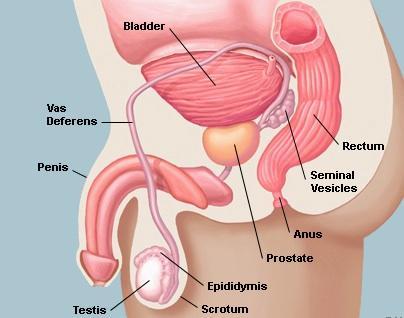
The prostate is a walnut-sized gland that is part of the male reproductive system. It is located below the bladder and in front of the rectum. It surrounds part of the urethra, the tube that carries urine from the bladder to where it exits the body. The gland's main function is to produce fluid for semen, which nourishes and transports sperm cells.
When cells grow abnormally and form a mass, it is what we call a tumor. Some tumors are benign (unlikely to be life-threatening) and others are malignant (cancerous and potentially life-threatening). Over the course of a man's lifetime, some prostate cells may become cancerous. Sometimes the cancer is very small and confined within the prostate. In other cases, the cancer may extend through the prostate capsule (a situation called extracapsular extension, or ECE) or into the seminal vesicles (glandular structures attached to the prostate), or it may invade into adjacent structures. Additionally, through a process called metastasis, the cancer cells can spread outside the prostate to nearby lymph nodes or travel through the blood and lymphatic systems to more distant parts of the body, most often to the bones. Determining whether the cancer is confined to the prostate versus whether it has spread either locally or to distant sites is important to selecting appropriate treatment.
- Localized prostate cancer refers to cancer that is confined to the prostate.
- Locally advanced cancer refers to cancer that may have spread outside the prostate – perhaps to regional lymph nodes – but not more distantly, such as to bones. There is hope for cure in both stages, but locally advanced tumors may require several types of treatment to achieve this.
- Advanced or metastatic prostate cancer refers to cancer that has spread far, typically to bones but other sites are also possible. If your physician says that you have more than just locally advanced cancer then you may want to read advanced disease
Prevalence of prostate cancer
Prostate cancer is the second most common cancer (following skin cancer) in U.S. men and is the second leading cause of cancer death in men. One in nine men born in the U.S. today will be diagnosed with prostate cancer during his lifetime. The risk of dying from prostate cancer, however, is much lower, at one in 41. Your individual risk depends on your risk factors. Continue reading this document to better understand your particular risk.
The American Cancer Society has estimated that more than 248,000 new cases of prostate cancer will be diagnosed each year in the United States and more than 33,000 men will die from the disease. The death rate for prostate cancer is twice as high for African American men as for the general population.
Most cases are diagnosed when men are in their 60s and 70s (average age: 66), although prostate cancer is sometimes detected in men in their 50s or younger. The good news is that the five-year survival rate for all stages of prostate cancer has increased from 69% to almost 99% over the past 20 years. These rates vary depending on the extent of disease. Reasons for this improvement include increased public awareness, earlier detection though screening with prostate specific antigen (PSA) blood tests, and advances in the treatments for this cancer.